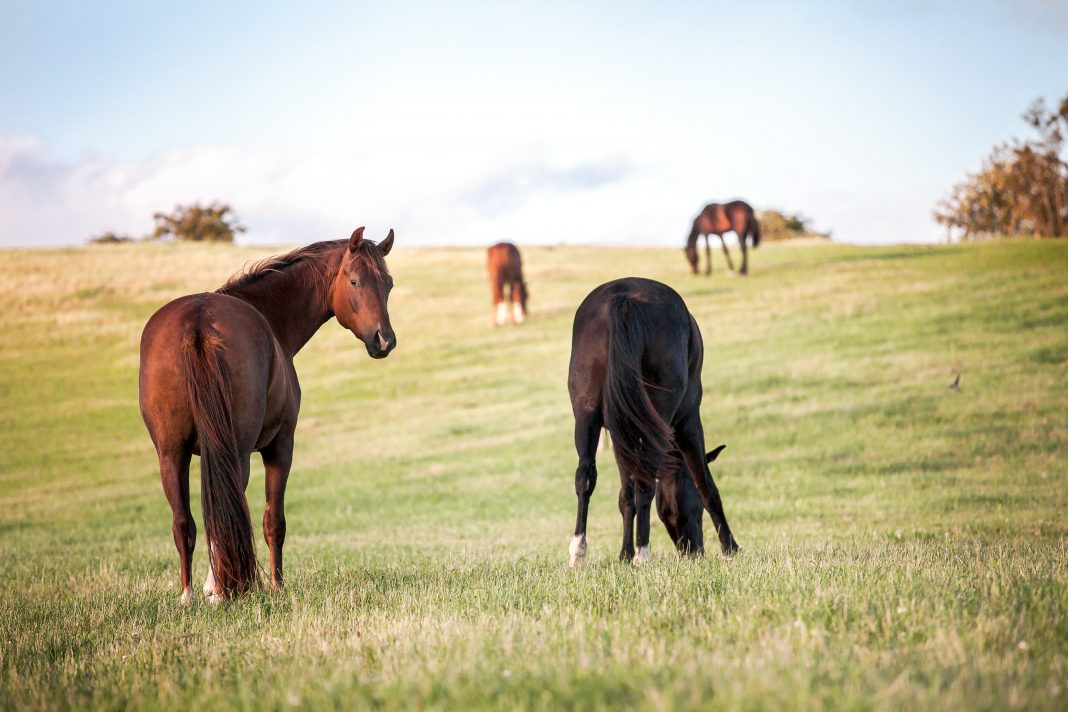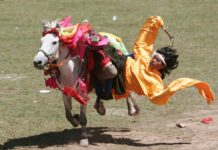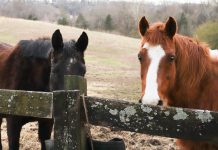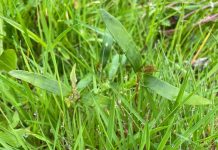Health advice from SPILLERS™ – Danni Twose shares about the hidden dangers of spring grass.
Spring is officially upon us which means as the days get longer, the weather gets warmer and grass flourishes, horse owners up and down the country will looking forward to turning their horses out. While many embrace the break from mucking out, the arrival of lush spring grass can dampen the spirits of those with horses prone to laminitis or weight gain.
How much grass do horses eat?
Ponies are renowned for being grass guzzling machines and have been seen to consume up to 5% of their bodyweight (dry matter) in grass per day when living out 24/7 – this equates to a whopping 12.5kg for a 250kg pony! Although intake in horses may be lower, some may well give ponies a good run for their money.
How many calories are in grass?
Spring grass can easily contain 11MJ DE/kg (megajoules of digestible energy per kilo: energy = calories). This means a 250kg pony living out at grass could consume enough energy (calories) to fuel a 500kg racehorse – equivalent to over half a bag of conditioning cubes every day! This makes it easy to see how some horses and ponies gain weight so easily. In one study, ponies with free access to grazing for 6 weeks gained 16% of their bodyweight – this is equivalent to an 11st human gaining almost 2st in 6 weeks!
How much sugar is in grass?
Grass may contain up to 15% simple sugars, the majority of which is sucrose, the main form of sugar in molasses and the same sugar you put in your tea. This means a 250kg pony living out 24/7 may consume almost 2kg of simple sugars per day from grass alone! But simple sugars aren’t the only concern, grass can also be high in fructan or ‘stored sugar’. In fact, the total water soluble carbohydrate (WSC) level which includes simple sugars and fructan may be as high as 35%!
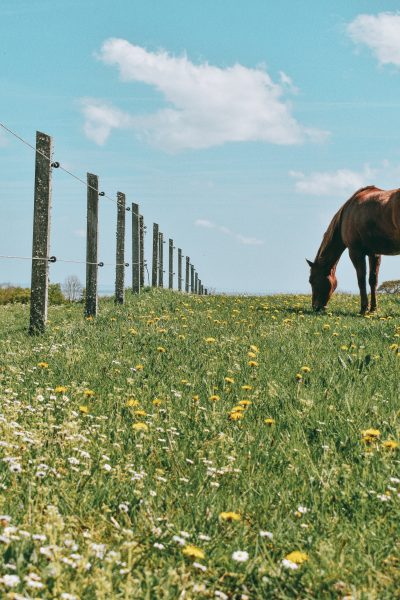
Cold temperatures and bright sunshine is a dangerous mix!
Think back to your school science lessons – grass can’t photosynthesis and therefore produce sugar without sunlight. When the sun goes in the grass stops producing sugar but provided it’s warm enough (above 5°C), stored sugars will be used to fuel growth overnight. Conditions that increase sugar production but limit growth such as sunny frosty mornings cause WSC’s to accumulate. On the flip side, conditions that stop or limit photosynthesis (darkness or cloudy days) but encourage growth (warm weather and healthy, fertile soil) help to limit WSC levels in the grass.
Fertiliser: friend or foe?
Many owners are concerned that fertilising their paddocks will cause the sugar content of the grass to rocket but as sugar is used for growth, this may not be the case. Grass will continue to produce sugar whenever the sun is shining – if nutrient deficiencies in the soil limit grass growth, sugar levels in the grass may remain high. Although good pasture management can help to reduce the accumulation of WSC or ‘sugars’ in the grass (regular topping is another way of maintaining active grass growth), good doers and laminitics are still likely to need to have their access to grazing restricted.
Tips for reducing grass intake
- Consider strip grazing – strip grazed ponies have been seen to gain significantly less weight compared to ponies given free access to a restricted amount of grazing
- If available, consider making use of bald paddocks or non-grass turnout and providing a suitable hay or hay replacer
- Try using a grazing muzzle – grazing muzzles have been shown to reduce grass intake by an average of 80% in ponies turned out for 3 hours
- Avoid turning your horse or pony back out to grass after removing their muzzle – some horses and ponies may gain weight as a result of eating more once the muzzle has been removed
- Beware of binge eating – ponies turned out for 3 hours without a muzzle have been seen to consume almost 1% of their bodyweight (dry matter) in grass which may equate to two-thirds of the total daily forage allowance for pony on a weight loss diet!
Methods of reducing ‘sugar’ intake from forage include:
- Turning out for a few hours early in the morning or overnight – ideally turn out as late as possible (after sunset) and bring in as early as possible (no later than mid-morning)
- Turning out on cloudy days or in shady spots
- Turning out on healthy, fertile soils
- Avoid turning out on sunny frosty mornings
- Avoid turning out on hay stubble
- Avoiding pastures (and hay) containing large amounts of perennial ryegrass
- Feeding soaked hay – soaking helps to reduce the WSC or ‘sugar’ content although it’s important to remember that results are highly variable which means soaking doesn’t guarantee suitability for laminitics
- Replacing up to 30% of the total forage ration with straw
- Feeding a hay replacer low in starch and sugar such as SPILLERS™ HAPPY HOOF™ or SPILLERS™ HAPPY HOOF™ Molasses Free
When is the safest time to turn out?
Sadly, there is no guaranteed ‘safe time’ to turn out but restricting the amount of grass your horse or pony eats in addition to turning out on pasture that is likely to contain lower levels of WSC or ‘sugars’ can help to manage the risk of excess weight gain and laminitis. However, horses and ponies at very high risk of laminitis may not be able to graze at all, especially during high-risk periods such as spring and autumn.
For more advice on feeding your laminitic horse or pony this spring, contact the SPILLERS Care-Line


